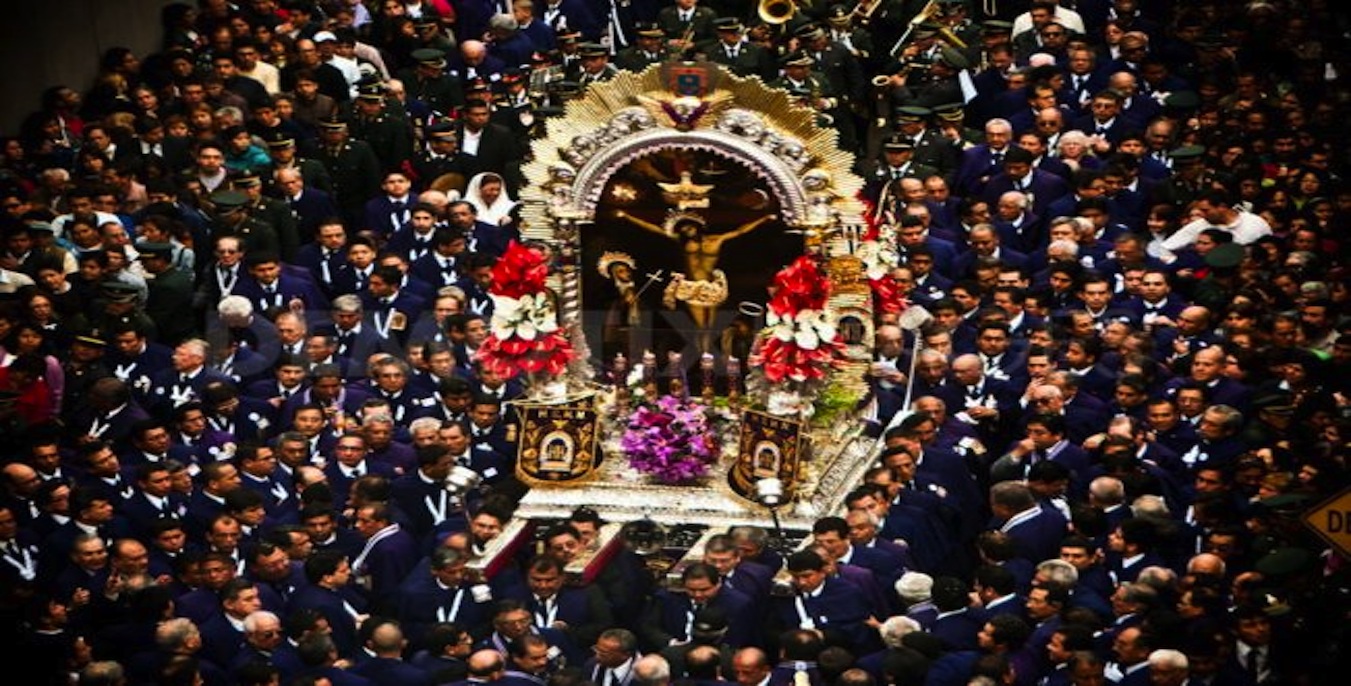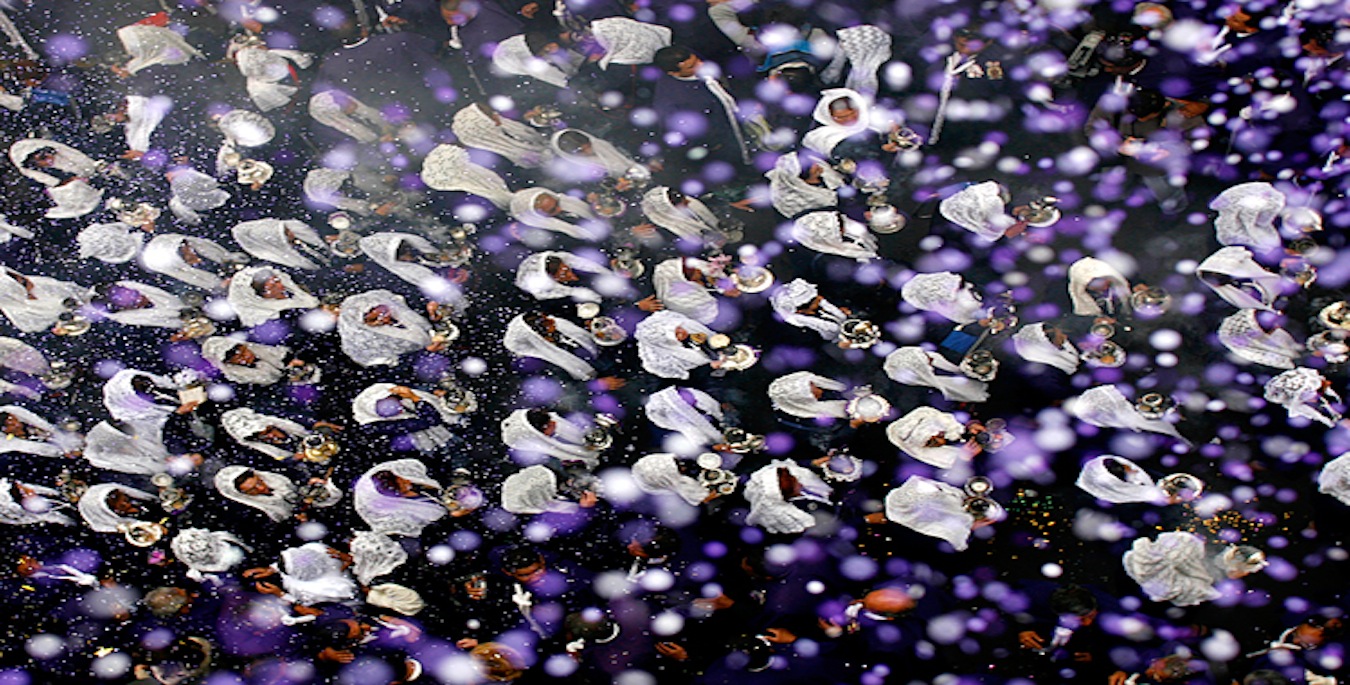04/10/2018
The Catholic processions of the Lord of Miracles take place in Lima every year during the month of October. The occasion is in remembrance of the events that transpired following a life-changing earthquake which took place in Lima and El Callao in the 17th century. In the wake of this natural disaster, those in the affected villages had very little remaining and turned to the sole standing element, a mural of the crucified Christ, for religious guidance and direction. The mural, painted by a former slave against an unassuming clay building, had many attempts on its existence as authorities prohibited its adoration and endeavoured to destroy it. Standing the test of time, the mural has become the most highly venerated symbol in Latin America.
Following the initial earthquake, a second occurred in the city, causing chaos to the surrounding villages except for the adored mural. This phenomenon was the catalyst which invigorated the dwellers to foment the first Lord of Miracles procession. This event began as an Afro-Peruvian practice as a profession of their faith and was subsequently adopted by the Creole middle class in the 18th century.

Today, the event is one of the largest of its kind in South America. Comprising some 2,500 people, the processions take place in central Lima and are festivals of flags, bunting and bursts of colour. The format of the event follows a walking convoy of transporting a mural replica from its base on men´s shoulders. Starting at the “Iglesia de las Nazarenas” and progressing to different churches spread across Lima, the processions cross areas such as the historic city centre, La Victoria and Barrios Altos – a nearby city located east of the historic centre and streets, which also leads back to the “Iglesia de las Nazarenas”. During the processions of El Señor de los Milagros, participants are clothed in purple attire which is significant of their devotion and a representation of the patience possessed by the women who cared for the church. For this reason, in Lima, October is commonly referred to as Mes Morado or the “purple month”.

As one of the most popular events in the city, with thousands in attendance each year to participate and to observe, there are many family-friendly ways to get involved. Local vendors on neighbouring streets showcase religious ornaments and traditional signature dishes. Turron nougat, picarones and turrón de Doña Pepa are just a few of the delectable dishes you can expect to see during a Señor de los Milagros procession.
Representing a long-lasting faith, resilience and pursuit of happiness, El Señor de los Milagros is an integral part of Peruvian culture which also offers a vibrant atmosphere of people, hymns and local delights and is certainly not one to be missed.
Get informed on more of Peru’s treasured traditions by visiting our website, Inkaterra.com, and to learn more about processions and celebrations in Peru, read our blogs ‘Inkaterra´s book dedicated to the “Lord of Miracles‘ and ‘Festival season in Peru’. It should also be noted that Inkaterra previously published the book “El Señor de los Milagros” which was subsequently gifted to Pope Francis in 2014, during Peru’s former President’s visit to the Vatican.
